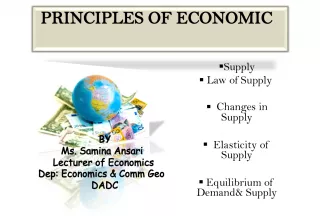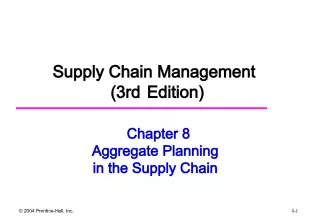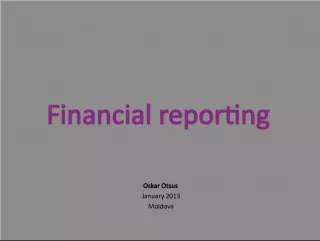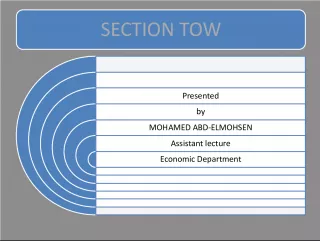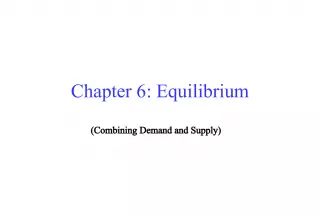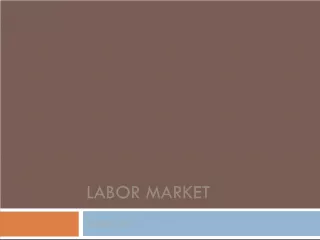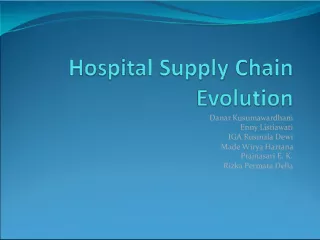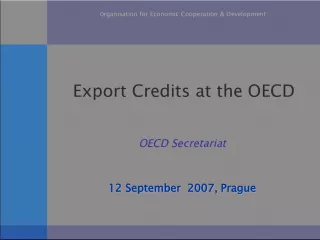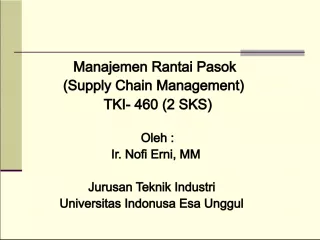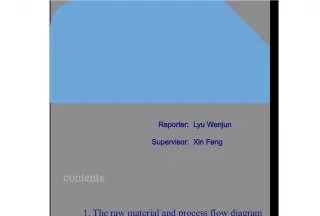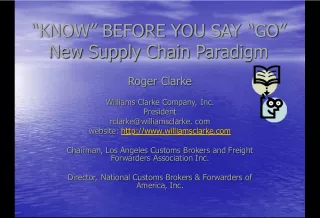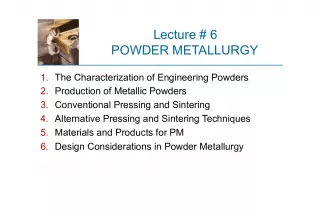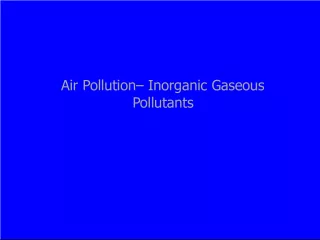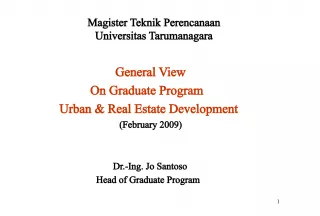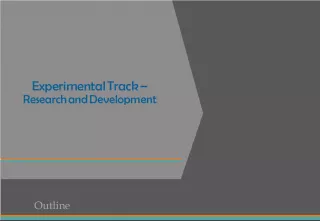Understanding Supply: Costs of Production and Objectives
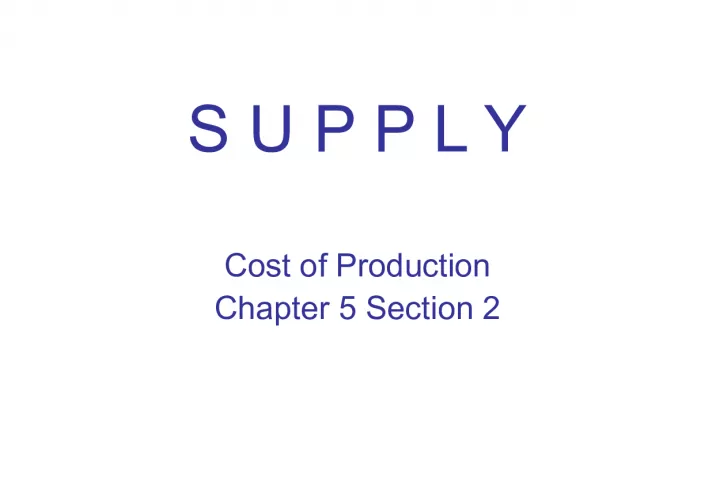

This article covers Chapter 5 Section 2 of Supply, focusing on how firms decide how much labor to hire, production costs, output, and shutting down unprofitable businesses. It also includes a review of Section 1, explaining what supply is, the law of supply, supply graphs, market periods, short run periods, long run periods, elasticity, and inelasticity.
- Uploaded on | 2 Views
-
 krishna
krishna
About Understanding Supply: Costs of Production and Objectives
PowerPoint presentation about 'Understanding Supply: Costs of Production and Objectives'. This presentation describes the topic on This article covers Chapter 5 Section 2 of Supply, focusing on how firms decide how much labor to hire, production costs, output, and shutting down unprofitable businesses. It also includes a review of Section 1, explaining what supply is, the law of supply, supply graphs, market periods, short run periods, long run periods, elasticity, and inelasticity.. The key topics included in this slideshow are supply, costs of production, labor, output, unprofitable business, firm objectives, supply graph, market period, short run period, long run period, elasticity, inelasticity,. Download this presentation absolutely free.
Presentation Transcript
1. S U P P L Y Cost of Production Chapter 5 Section 2
2. S U P P L Y Objectives: Explain how firms decide how much labor to hire to produce a certain level of output. Analyze the production costs of a firm. Understand how a firm chooses to set output. Explain how a firm decides to shut down an unprofitable business.
3. Section 1 Review 1. What is Supply? 2. What is the Law of Supply? 3. What are the 4 parts of a Supply Graph? 4. What is a Market Period? 5. What is a Short Run Period? 6. What is the Long Run Period? 7. What is Elastic? 8. What is Inelastic?
4. S U P P L Y Producers respond to a price change just like consumers did in Demand. As price goes upsuppliers will produce more product. This section is dedicated to learning how much a supplier will produce with a price change.
5. S U P P L Y One of the basic questions that a business has to answer how many workers to hire . Owners consider how the number of workers they hire will affect their total production.
6. S U P P L Y Example 1 worker is hired produces 4 beanbags/hour 2 workersproduces 10 beanbags/hour 3 workersproduces 17 beanbags/hour As new workers join the company, total output increases. 11 workersproduces 32 beanbags/hour 12 workersproduces 31 beanbags/hour WHY the decrease at 12 workers????
7. S U P P L Y There is a relationship between labor, measured by the number of workers in the factory, and the number of beanbags produced. Economists look at Marginal Product of a company adding additional labor to work in the factory. M.P. = the change in output from hiring one additional unit of labor.
8. S U P P L Y Labor Output Marginal Product 0 0 --- 1 4 4 2 10 6 3 17 7 4 23 6 5 28 5 6 31 3 7 32 1 8 31 - 1
9. S U P P L Y When we look at the schedule, we see that MP increases for the 3 workers. It then decreases when we hire a 4 th worker. It continues to decrease until we have hired an 8 th worker and it becomes a minus number. W H Y ???
10. S U P P L Y The MP of labor increases for the first 3 workers because thee are three tasks involved in making beanbags. {cut and sew cloth into the shape; stuff the bag; and sew the bag closed} It is hard for a single worker to perform all three tasks and be able to produce a whole lot. Adding a 2nd worker would allow each worker to specialize in 1 or 2 tasks. Specialization increases output per worker . 3 workers would allow each one to specialize in a single task and become much more efficient.
11. S U P P L Y Increasing Marginal Returns a level of production in which the marginal product of labor increases as the number of workers increase. Diminishing Marginal Returns a level of production in which the marginal product of labor decreases as the number of workers increase.
12. S U P P L Y Diminishing Marginal Product occurs at the 4th worker being hired. Continues until we get to 7th worker. This happens when workers have to work with limited amount of capital. Capital is any human-made resources that is used to produce other goods. Capital in this example is a single pair of scissors and a single sewing machine.
13. S U P P L Y This problem gets worse as more workers are hired. {Wasted time waiting for a machine} Negative Marginal Returnsoccurs when workers get in each others way and disrupt the production process . At this point, overall output decreases.
14. S U P P L Y Production Costs: Paying workers and purchasing capital are costs of producing goods. 2 categories Fixed Costs - the cost that does not change no matter how much of a good is produced. Variable Costs - a cost that rises or falls depending on how much is produced.
15. S U P P L Y Fixed Costs include Rent Machinery Repairs Property Taxes Salaried Workers
16. S U P P L Y Variable Costs include Cost of Raw Materials Hourly Workers (Labor) Electricity/Heating Bills
17. S U P P L Y Total Cost = fixed costs + variable costs . Marginal Costs - the cost of producing one more unit of a good. Marginal Revenue - the additional income from selling one more unit of a good Total Revenue = Price x Quantity Profit = Total Revenue - Total Cost
18. S U P P L Y Fixed Variable Total Marginal Marginal Total Beanbags Costs Costs Cost Cost Revenue Rev. Profit 0 $ 36 $ 0 $ 36 ----- $ 00 $ 0 $ -36 1 $ 36 $ 8 $ 44 $ 8 $ 24 $ 24 $ -20 2 $ 36 $ 12 $ 48 $ 4 $ 24 $ 48 $ 00 - 3 $ 36 $ 15 $ 51 $ 3 $ 24 $ 72 $ 21 4 $ 36 $ 20 $ 56 $ 5 $ 24 $ 96 $ 40 5 $ 36 $ 27 $ 63 $ 7 $ 24 $120 $ 57 6 $ 36 $ 36 $ 72 $ 9 $ 24 $144 $ 72 7 $ 36 $ 48 $ 84 $ 12 $ 24 $168 $ 84 8 $ 36 $ 63 $ 99 $ 15 $ 24 $192 $ 93 9 $ 36 $ 82 $ 118 $ 19 $ 24 $216 $ 98 10 $ 36 $ 100 $ 136 $ 18 $ 24 $240 $104 11 $ 36 $ 136 $ 172 $ 36 $ 24 $264 $ 92 12 $ 36 $ 173 $ 209 $ 37 $ 24 $288 $ 79 Each beanbag is going to sell for $ 24.00
19. S U P P L Y Behind all of the decisions about how many workers to hire is the firms basic goal: to Maximize Profits ! Profit is defined as total revenue minus total cost. Total Revenue is the money a firm gets by selling their product.
20. S U P P L Y Another way to find the best level of output is to find the output level where Marginal Revenue = Marginal Cost. MR is additional income from selling one unit of a good. IF the firm has no control over the market price, MR = the market price. Operating Cost - the cost of operating a facility, such as a store or factory.
21. S U P P L Y Operating Cost includes Variable costs the owners must pay to keep the factory running. NOT Fixed Costs
22. S U P P L Y Stage I - increasing returns as the number of workers increase they better use of their time, machinery, and resources. Stage II - total production keeps growing , but by smaller and smaller amounts. The rate in increase in total production is starting to slow down. Each additional worker is making a diminishing contribution (although +) Stage III - too much input - total output decreases as input increases -MP is negative - total plant output decreases
23. S U P P L Y Input Total Marginal (# of workers) Product Product Stage 0 00 00 ---- 1 7 7 Stage I 2 20 13 Stage I 3 38 18 Stage I 4 62 24 Stage I 5 90 28 Stage I 6 110 20 Stage II 7 129 19 Stage II 8 138 9 Stage II 9 144 6 Stage II 10 148 4 Stage II 11 145 - 3 Stage III 12 135 -10 Stage III
